Many people were startled when they first saw a bright red tomato sprouting green sprouts overnight. Most of them hesitated, not knowing whether to eat it or not. Some people think that sprouted tomatoes have not changed color or have an unpleasant smell, but only have reduced nutrients such as vitamin C, K, fiber... so they just need to remove the sprouts and the surrounding 1-2cm and they can still eat it.
 Experts share the most delicious and nutritious way to prepare eggs
Experts share the most delicious and nutritious way to prepare eggsAccordingly, they treat sprouted tomatoes by:
- Wash tomatoes to remove dirt and bacteria. If sprouts are slightly visible, cut off the sprouting part and surrounding area to reduce the risk of poisoning.
- Peel the tomatoes thoroughly – especially the green, or white, discolored areas and at least 1 cm around to remove any harmful compounds that may have accumulated on the surface.
Then boil or steam the tomatoes to remove harmful substances, bacteria - especially the remaining solanine - a natural poison. Then, process it into dishes, tomato sauce to add to other dishes to make it more delicious.
In addition, some opinions say that sprouted tomatoes can increase some nutrients that are beneficial to health. For example, some enzymes that are only produced in sprouted tomatoes can help support the digestive process, absorbing nutrients better. Or antioxidants in sprouted tomatoes can help reduce the aging process, protecting the body from the effects of free radicals.
At the same time, most people think that tomatoes that have sprouted long, are dark green, or show signs of spoilage, should be thrown away for good. They think that the harmful effects of sprouted tomatoes can be the same as other sprouted vegetables and fruits, so they should not eat them.
In fact, sprouted tomatoes are bitter and of poorer quality, affecting the taste of the dish. Therefore, many people throw away sprouted tomatoes, because they are afraid that the content of solanine - a natural poison and some compounds produced when tomatoes sprout - can increase, which is not good for health. People who eat a lot of sprouted tomatoes can have stomach aches, nausea, diarrhea, and even poisoning - especially children, the elderly, the sick, or those with stomach problems.
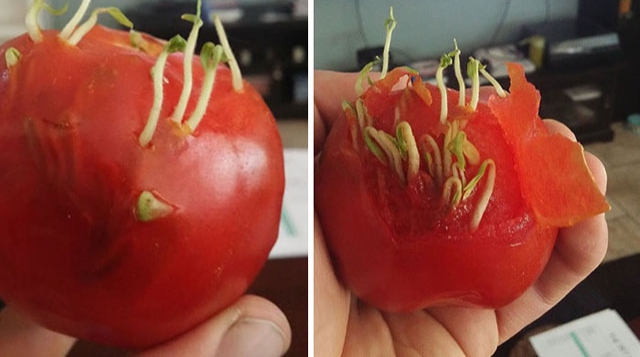
Surprised to see sprouted tomatoes, many people hesitated, wondering if they could eat them. Photo from the internet.
What do scientists say about sprouting tomatoes?
Regarding sprouting tomatoes, Associate Professor Dr. Nguyen Duy Thinh (Food Technology expert) said that sprouting tomatoes can happen after harvesting and not being stored properly, causing them to rot. Or because people buy too many tomatoes and do not store them properly, causing them to spoil. When tomatoes are about to spoil, the tomato seeds have their mucous membranes destroyed, stimulating the seeds to germinate.
Sprouting is a sign of spoiled tomatoes, which are no longer as tasty as fresh tomatoes - but they do not produce toxins (like spoiled meat and fish...). Therefore, if you save, you can still eat them as vegetables, although the taste is not as good (like sprouted beans are still good to eat, sprouted rice grains are rich in enzymes used to make malt...). Therefore, people can eat them as vegetables.
But in fact, tomatoes are available all year round, cheap, easy to buy, or processed into tomato sauce to eat all year round. But you should not buy too much because the family preservation method is not good. On the other hand, if there are too many tomatoes, can not eat them all and let them sprout, it is very wasteful.
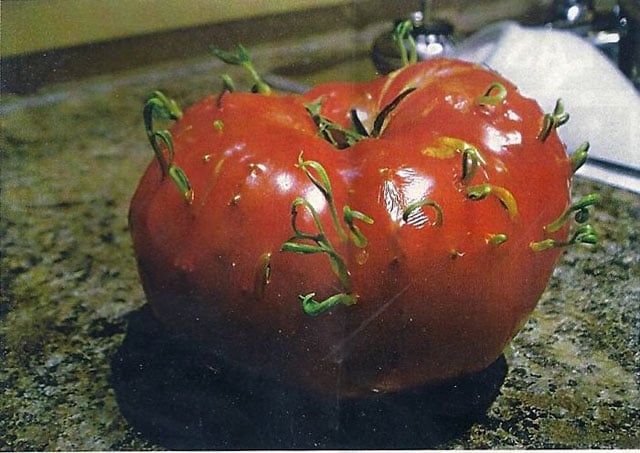
To prevent tomatoes from sprouting, store in a cool, dry place, away from direct sunlight. Photo from the internet.
Some tips for preserving tomatoes
Tomatoes should be kept in a basket or a ventilated box at room temperature, in a cool, dry place, away from direct sunlight to prevent sprouting. Tomatoes can also be wrapped in newspaper or plastic wrap to absorb moisture and reduce the risk of sprouting.
Do not use plastic bags or sealed plastic bags to store tomatoes because they can retain moisture, causing the tomatoes to become moldy and promote sprouting. Regularly check to detect and treat early signs of sprouting and mold.
If you are using tomatoes within a few days, there is no need to refrigerate them. Although refrigeration helps to keep ripe tomatoes fresh longer, it is still best for short-term storage.
Do not let tomatoes come into contact with other fruits, because tomatoes can emit ethylene gas, causing fruits that are sensitive to this gas (like apples, bananas, potatoes, etc.) to ripen and sprout more easily.
- Choose fresh, delicious tomatoes to eat to be safe for your health.
- If there are too many tomatoes that need to be preserved, check them often to detect early signs of mold, sprouting, damage... to remove them immediately so as not to affect the other fruits.
Preserving tomatoes properly will retain the nutritional value of tomatoes, making meals delicious and ensuring the health of your loved ones and family.
Note when eating tomatoes
- Only eat tomatoes when they are fully ripe. Choose fresh, bright red tomatoes that are not shriveled, bruised, cracked, or damaged – as this can promote sprouting.
- Before preparing tomatoes for cooking, you should check carefully. If you see signs of white mold, green sprouts, or crushed tomatoes, you should discard them to avoid introducing harmful compounds into the body.
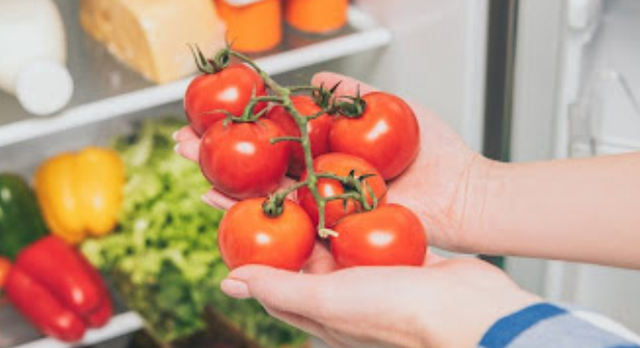
Tomatoes should not be stored with other fruits. Photo from internet.
Tomato fish dish goes great with rice
If there are many ripe red tomatoes, or tomatoes are in season and cheap, they can be processed into tomato sauce or juice to avoid waste. Tomato sauce can be preserved for a long time, and added to dishes makes the dish more delicious, rich, aromatic and attractive.
Here are some delicious dishes using tomato sauce:
Ingredients for tomato fish sauce (for 4 people)
1 piece of delicious fish
2 tomatoes
1 garlic bulb, 2 shallots, 1 ginger branch, fresh chili to taste, green onion and dill to taste.
How to make tomato fish sauce
Clean fish.
Wash tomatoes, cut into wedges.
Cut green onions into pieces. Peel, crush, and chop shallots. Peel and slice ginger.
Boil oil/fat, put fish pieces in and fry. Turn fish until both sides are light golden brown, then remove from heat.
Fry the shallots until fragrant, then add the tomatoes and stir-fry until cooked, then add the fried fish. Season to taste and continue cooking over low heat. When the fish is tender, season to taste, add another 1/2 teaspoon of pepper and remove from heat. Pour the tomato sauce fish onto a plate, drizzle the tomato sauce over it.
Finished product
Deep golden fish pieces, beautiful orange-red tomato sauce, fresh green accents of green onions. Eating a piece of fish in tomato sauce is very delicious, rich in flavor, super delicious and goes well with rice.
 Experts share the most delicious and nutritious way to prepare eggs
Experts share the most delicious and nutritious way to prepare eggsSource: https://giadinh.suckhoedoisong.vn/bat-ngo-vi-qua-ca-chua-chin-moc-mam-ly-giai-cua-chuyen-gia-va-mon-an-thom-ngon-sieu-ton-com-tu-ca-chua-172241009154914194.htm


![[Photo] Close-up of heavy damage at the school located on the banks of the Ban Thach River](/_next/image?url=https%3A%2F%2Fvphoto.vietnam.vn%2Fthumb%2F1200x675%2Fvietnam%2Fresource%2FIMAGE%2F2025%2F11%2F26%2F1764152130492_ndo_bl_img-8188-8805-jpg.webp&w=3840&q=75)
![[Photo] VinUni students' emotions are sublimated with "Homeland in the Heart: The Concert Film"](/_next/image?url=https%3A%2F%2Fvphoto.vietnam.vn%2Fthumb%2F1200x675%2Fvietnam%2Fresource%2FIMAGE%2F2025%2F11%2F26%2F1764174931822_10-3878-jpg.webp&w=3840&q=75)






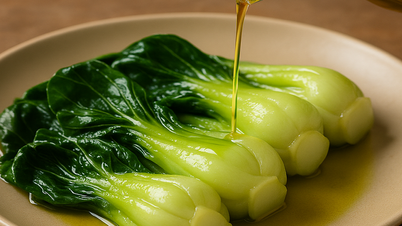

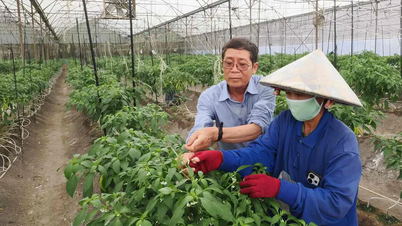


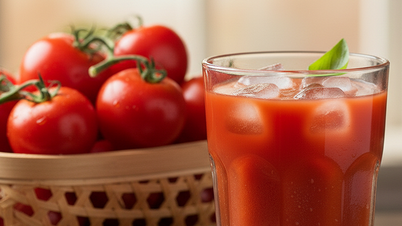
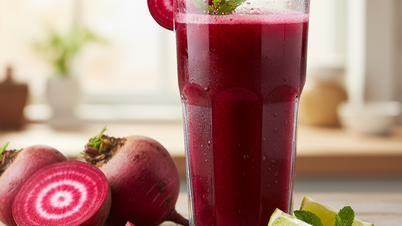


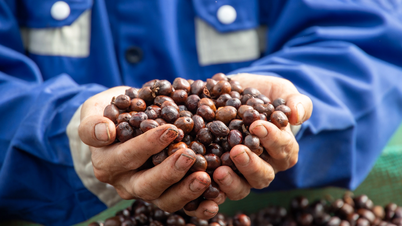



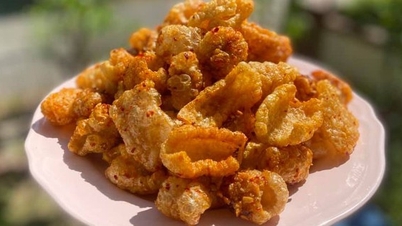









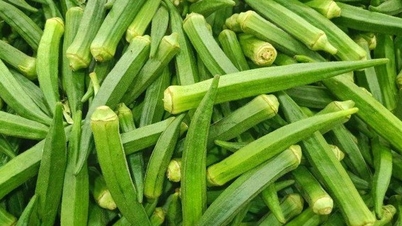
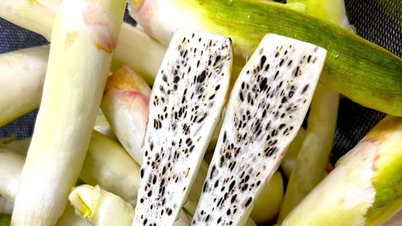


















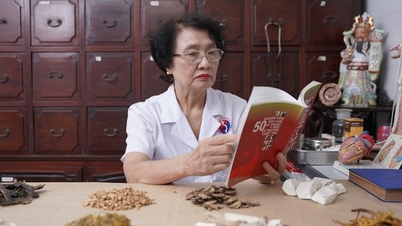
















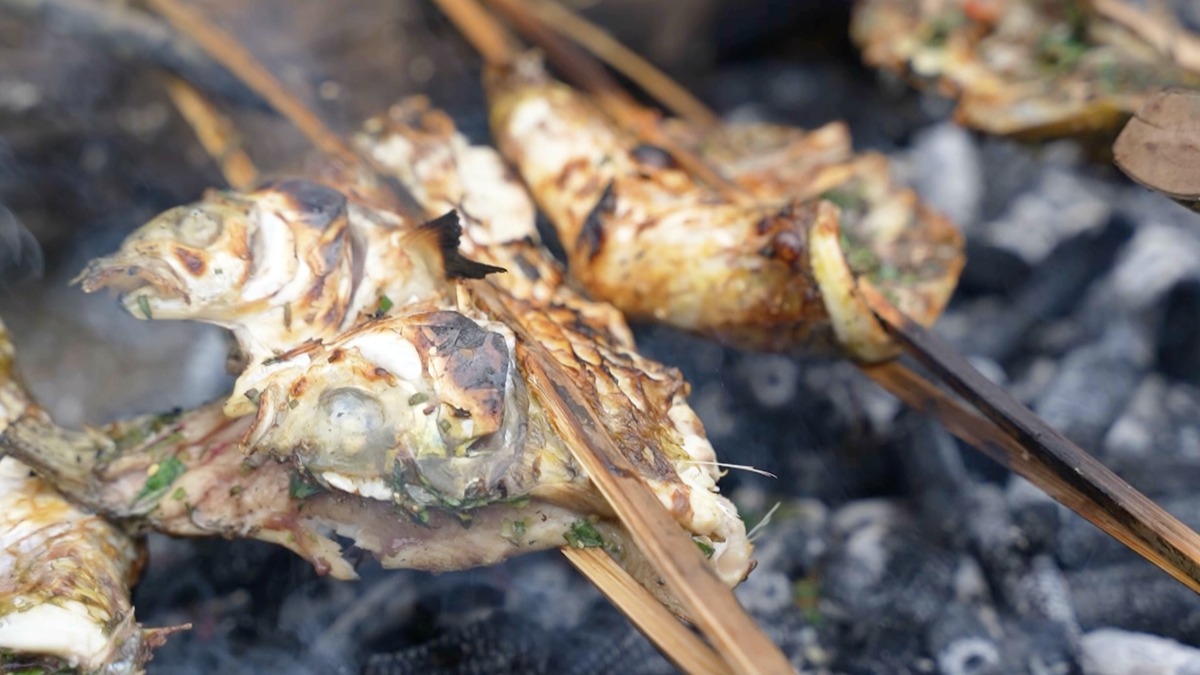

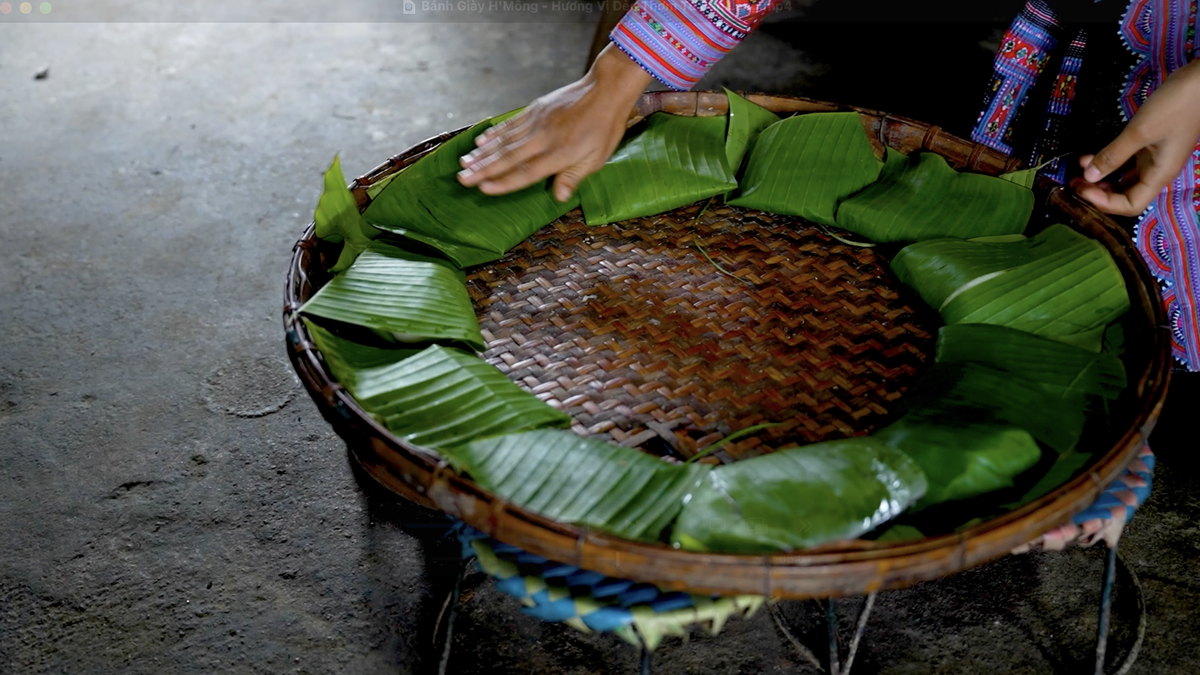
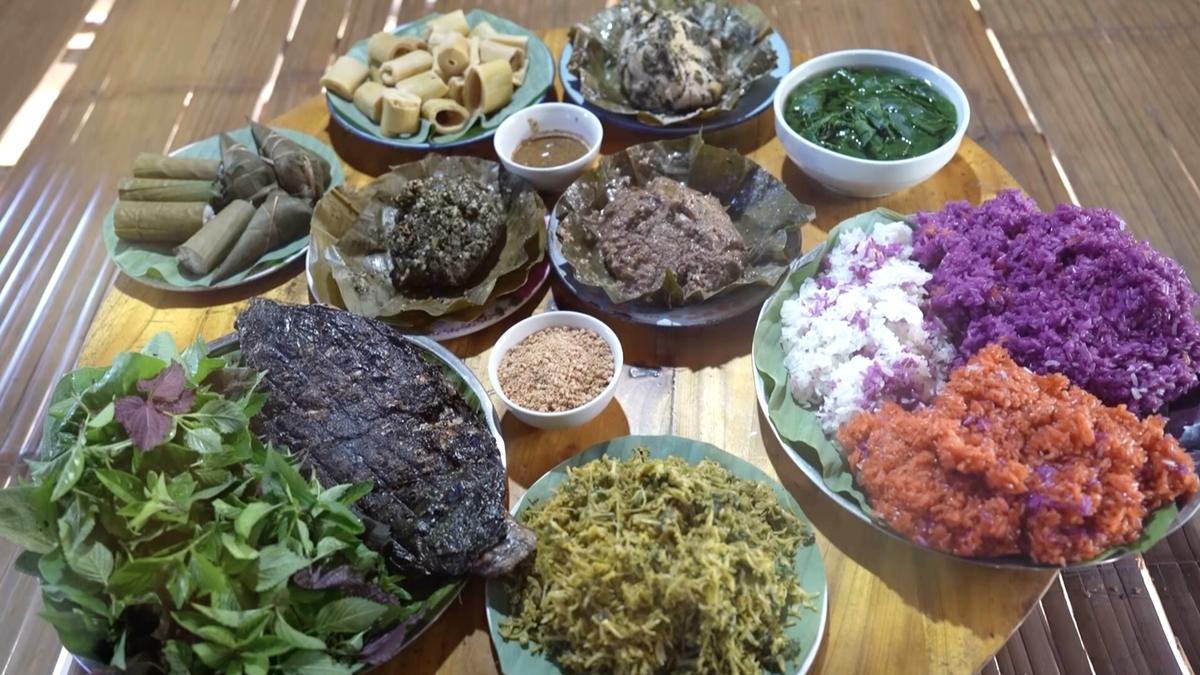




![[Photo] Opening of the 28th Session of the Hanoi People's Council](https://vphoto.vietnam.vn/thumb/402x226/vietnam/resource/IMAGE/2025/11/26/1764155991133_image.jpeg)





















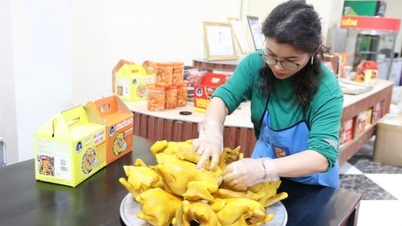

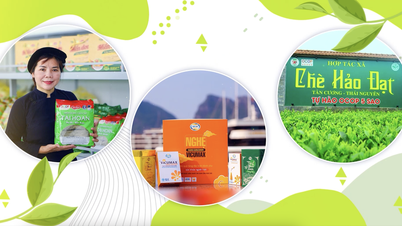






Comment (0)